January 14th, 2022 – Shabbat is almost here
And today we will listen to the captivating voice of Samy Elmaghribi, Moroccan singer born in Safi in 1922.
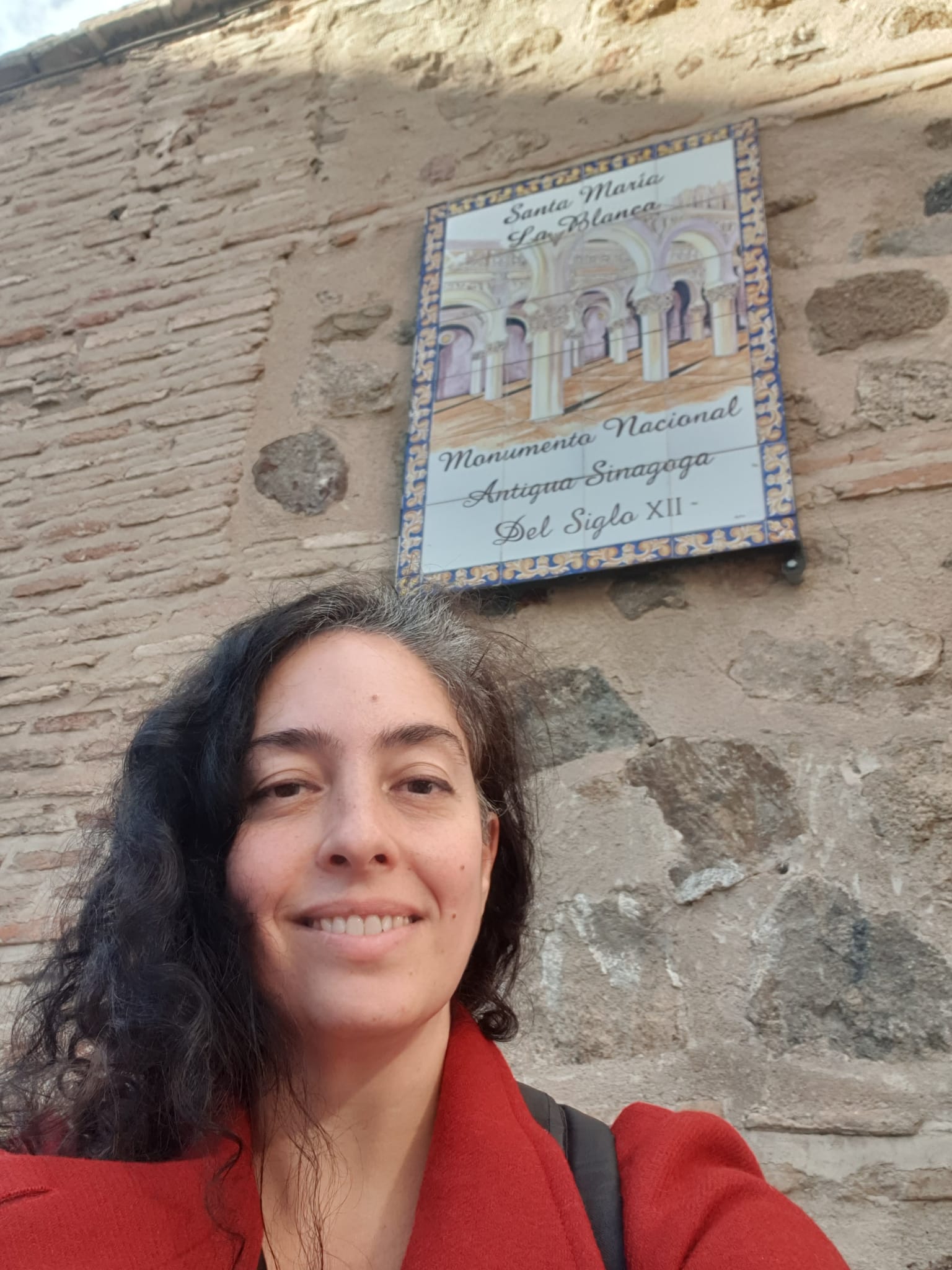 Hello, how are you? I hope well. Yesterday I was in Toledo for several meetings and I couldn’t help but go to the synagogues and take a picture. The day was like today, freezing at night and sunny and warm in the daytime. The situation with the pandemic is complicated in terms of infections but the effects are becoming much less tragic. In the Madrid region, concerts are going on and in general, except for the obligatory mask, life is almost normal.
Hello, how are you? I hope well. Yesterday I was in Toledo for several meetings and I couldn’t help but go to the synagogues and take a picture. The day was like today, freezing at night and sunny and warm in the daytime. The situation with the pandemic is complicated in terms of infections but the effects are becoming much less tragic. In the Madrid region, concerts are going on and in general, except for the obligatory mask, life is almost normal.
The sign said “Santa María La Blanca (Saint Mary the White), National Monument. Old synagogue of century XII” and it is in Toledo.
So, let’s take a leap across the strait. Today we have a protagonist from Morocco, with a truly captivating voice and way of interpreting. I hope you enjoy it.
Then, please, spread the word.And note that these weekly emails are also posted in the website www.musicbeforeshabbat.com
| Share this with a friend, right from here |
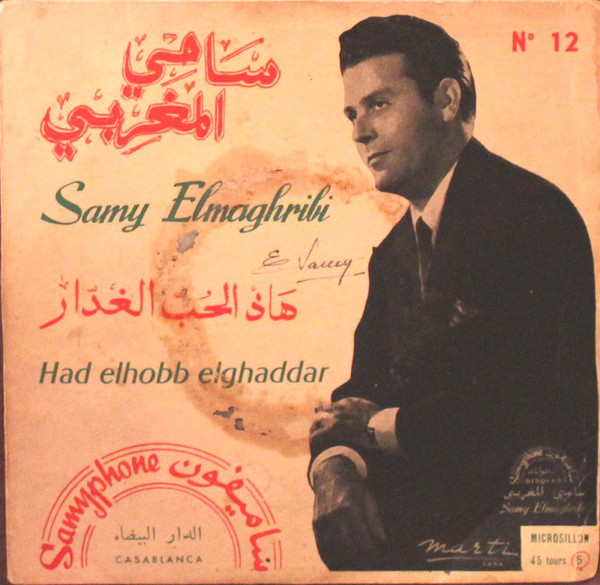
About Samy Elmaghribi
The website of the Institut Européen des Musiques Juives has a page with a long bio of Samy Elmaghribi. I will make a summary with the basic data and I will include some explanations and extra information. I encourage you to read the complete bio in the link above.
Biographic data:
- His real name was Salomon Amzallag.
- He was born on April 19, 1922, and it was the 7th day of Pesach.
- It was in Safi in Morocco.
- In 1926 the family settled in Rabat, and the young Samy quickly became fond of Arab-Andalusian music.
- When he was 14 years old, while his mother had just passed away, Samy and his family settled down in Sale (very close to Rabat, to the Northern side of the river Bou Regreg). He first studied at the Alliance Israelite, and then improved his musical art in Casablanca’s Music Conservatory.
- He went to Paris in 1948 to record his first album.
- In 1950 he returned to Morocco. He settled in Casablanca.
- He emigrated to Canada in 1960.
- In 1984, he left Montreal for Ashdod in Israel.
- He returned to Montreal in 1996, but continued to travel the world for concerts.
- Samy Elmaghribi passed away on March 9, 2008 in Montreal.
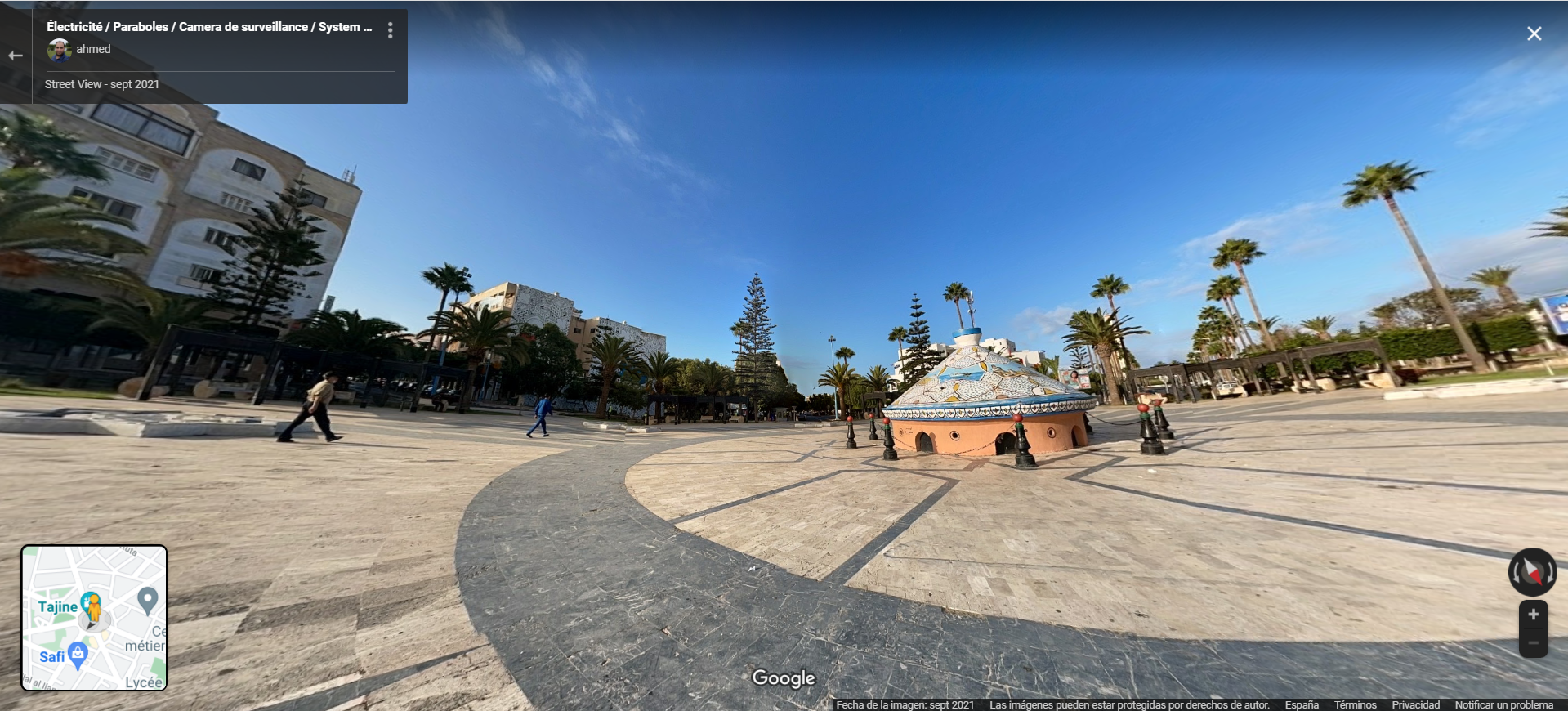
According to Viajes60marruecos.com, there is a Jewish communitary center in Safi, in Avenue Moulay Youssef, and two sinagogues, but I haven’t found other references and I don’t find anything in the Google Maps. This same information is repeated in other pages but it seems they just copy the other.
The Jews in Casablanca nowadaysFrom 1936 to 1948, Samy lived in Casablanca. He returned from Paris in 1950, he settled there too, until 1960. So we can consider that Casablanca is where Samy developed as an adult. In the edition about David Bouzaglo, we learnt that in Casablanca nowadays there is just one synagogue active. Casablanca remains the city in Morocco where most Jews live but years ago there were about 20. And only 80 Jews live there. These data are from this article in El Mundo (in Spanish) from 2015. The situation today may be worse. According to this article from El Español (in Spanish) from January 2021, the Jewish court of Casablanca was still active at the time of the publishing. The 7 judges are also rabbis. The Jewish population in the countrie was no more than 1 thousand. Other sources are more positive. The magazine Atalayar mentions that there are around 3000 Jews nowadays in Morroco, most of them in Casablanca. This picture of the mellah (Jewish quarter) of Casablanca is of public domain and I got it from here. 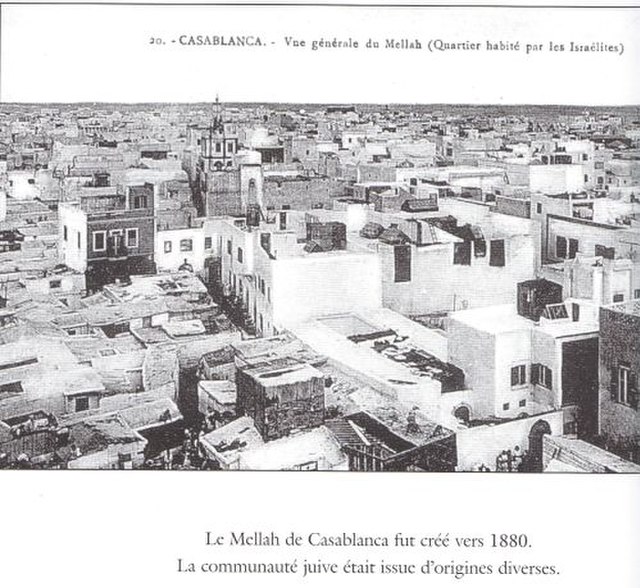 |
Works as a hazzan:
- In 1967 he was the first cantor of the Hispanic-Portuguese synagogue Shearith Israel. He officiated there during 16 years.
- In USA, he worked for a certain time as a cantor of the « Beit Yosef » Sephardi synagogue of New Jersey.
- He used the knowledge he got from his trips to Algeria to lead services in the great synagogues of Casablanca, Paris, Jerusalem and Montreal. “His performances of the Kol Nidre are known for its power and delicacy of its intonations.” I am so sorry, but I haven’t found any recording of this!
Records and tours:
- He learned to play the ud by himself when he was a child and started to spend time with the musicians of the Jewish neighborhood of Rabat. He also sang in the synagogue and in family reunions.
- Since he was 20, he started to dedicate only to music.
- In 1948 he had his first hit: Loukane Elmlayin. Listen to it, here.
- The success of that piece opened him the way to record in Paris for Pathé Marconi music label.
- He created his own music label, Samyphone.
- He composed popular music with traditional influences, based on patterns from malhun or hawzi. And he also sang popular songs.
- He was very fond of Salim Halili.
- He toured much, first mainly in Algeria and with the time, in more places.
- “His music integrated the quintessence of the Judeo-Moroccan and Andalusian musical heritage. He had a unique musical knowledge that was also found in his perfect mastery of Hebrew and classical Arabic.”
- “Samy travelled to Algiers in the 1950’s to hear the great masters such as Dahman Ben Achoure or Reinette l’Oranaise, and to get acquainted with tonalities found only in the Algerian interpretation of the gharnati music.”
- “His interpretation of popular songs, the qassidat, and his songs with a style recognizable among all, have remained forever engraved in the hearts of a community scattered around the world, and even in those of the new generation which hums his tunes, even if they do not always understand the words and the meaning.”
From Qasida poetry in Islamic Asia and Africa: Eulogy’s Bounty, Meaning’s Abundance. An Anthology, edited Stefan Sperl and Christopher Shackle:
“What, in fact, is a qasida? A brief description of its formal properties can be readily provided: it is a poem of some length, with verses divided into two hemistichs, a single metre and a monorhyme. […]
While the textual norms relate to the qasida as a work of verbal art, the cultural norms relate to the societal context of the poem’s composition and recitation. These comprise principally the following:
-
- —moral code; most qasidas (including every poem in the anthology) are designed to extol, uphold or call for allegiance to, a code of moral values. often of religious nature;
- —performance; the qasida is usually intended to be recited, chanted or even sung in a public setting;
- —social function; the qasida is a cultural commodity often composed for the purpose of a gift exchange which constitutes an integral part of its recitation, both secular and religious.”
Works in education:
- In Israel, he created the Merkaz Piyyout Veshira, a Sephardic music center where he taught as the educational director from 1988 to 1994, and conducted a choir of students which would later become the Israeli Andalusian Orchestra.
- In USA he taught Sephardi liturgy, especially in the Yeshiva University of New York.
- “He was the first man to transcribe Andalusian music. He studied its repertoire to train music lovers in the Judeo-Moroccan tradition of sung poetry, the piyutim, malhun and matrouz, the gharnati nubas, the Moroccan mou’al, the Algerian cha’âbi and the hawzi.”
Meaning:
- “Samy succeded to unite Jews and Muslims through the love of songs, and thus contributed to the vision of peace of future time.”
About the piece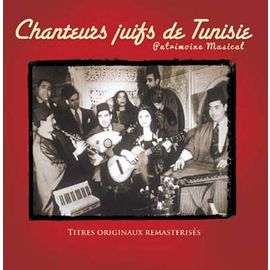
The recording is included in the album Chanteurs juifs du Maroc, Patrimoine Musical, released by the French record label MLP in 2013. It is one of three albums dedicated to Jewish singers from North Africa: Algeria and Tunis complete the trio.
This specific recording is said to be from 1960. It is a pity but I haven’t found the credits for the violinist or the accordeonist or harmonium player.
It’s time to enjoy the music:
Click the picture to listen to Mal Hbibi Malou by Samy Elmaghribi:
